
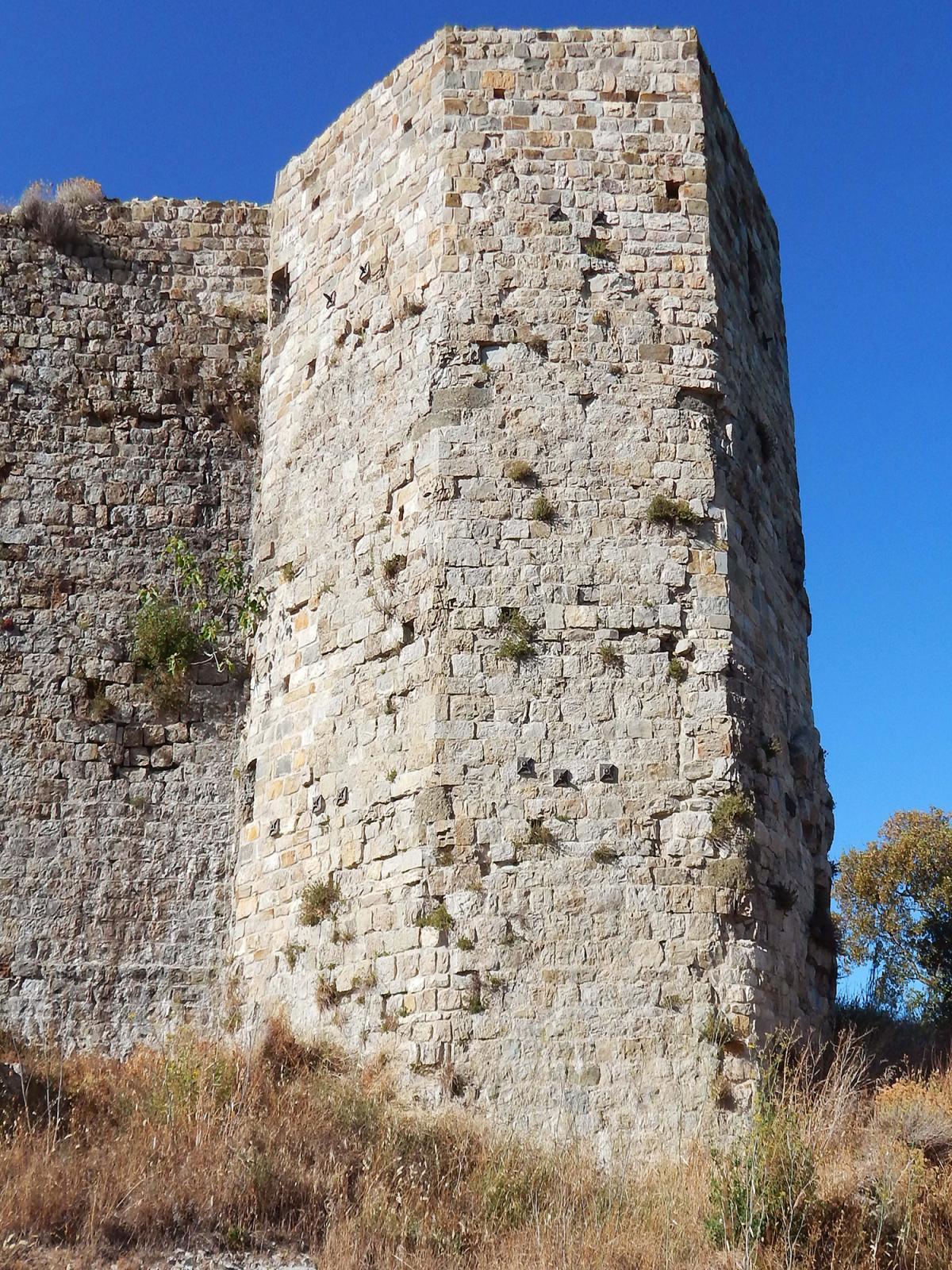
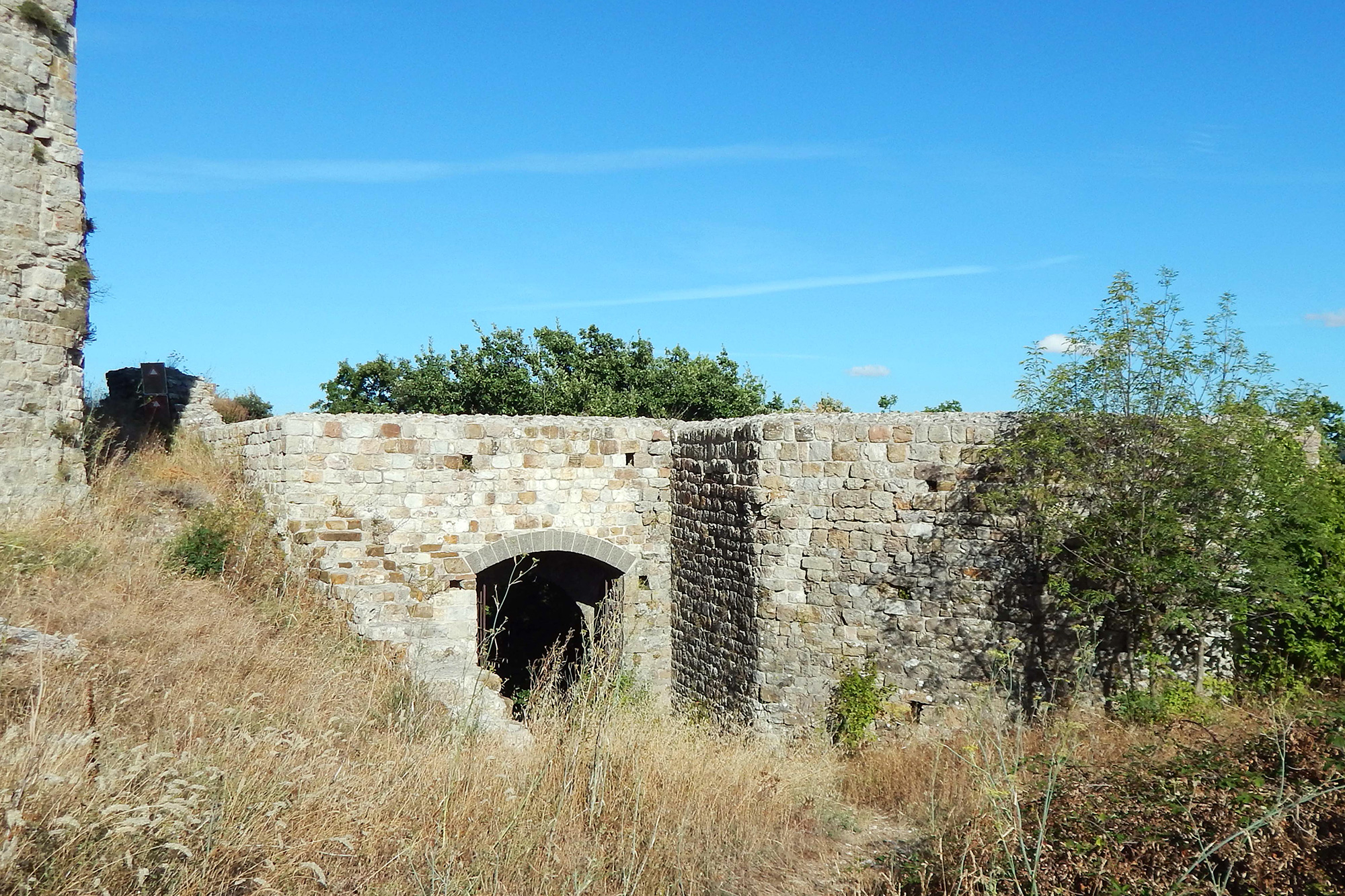

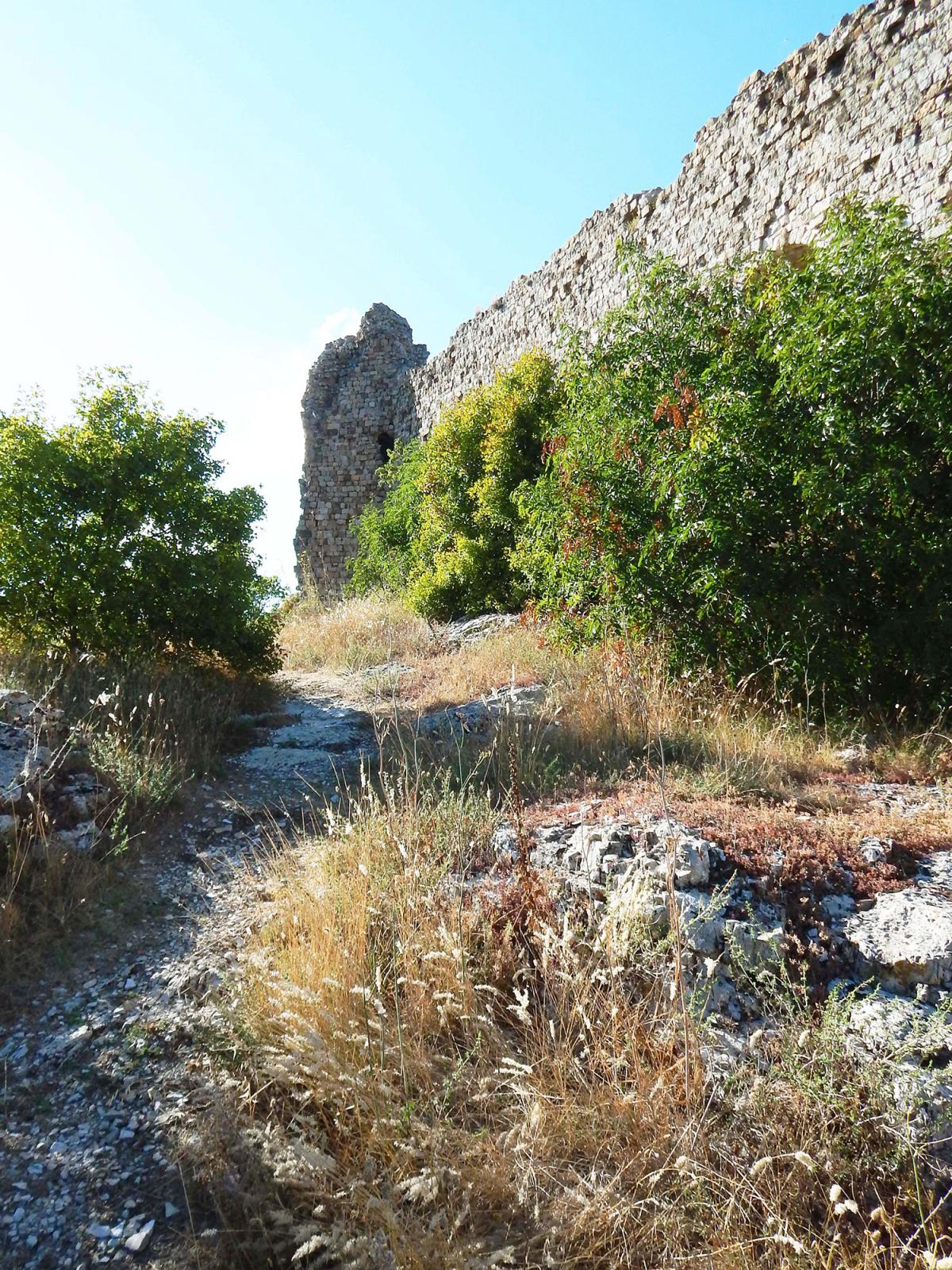
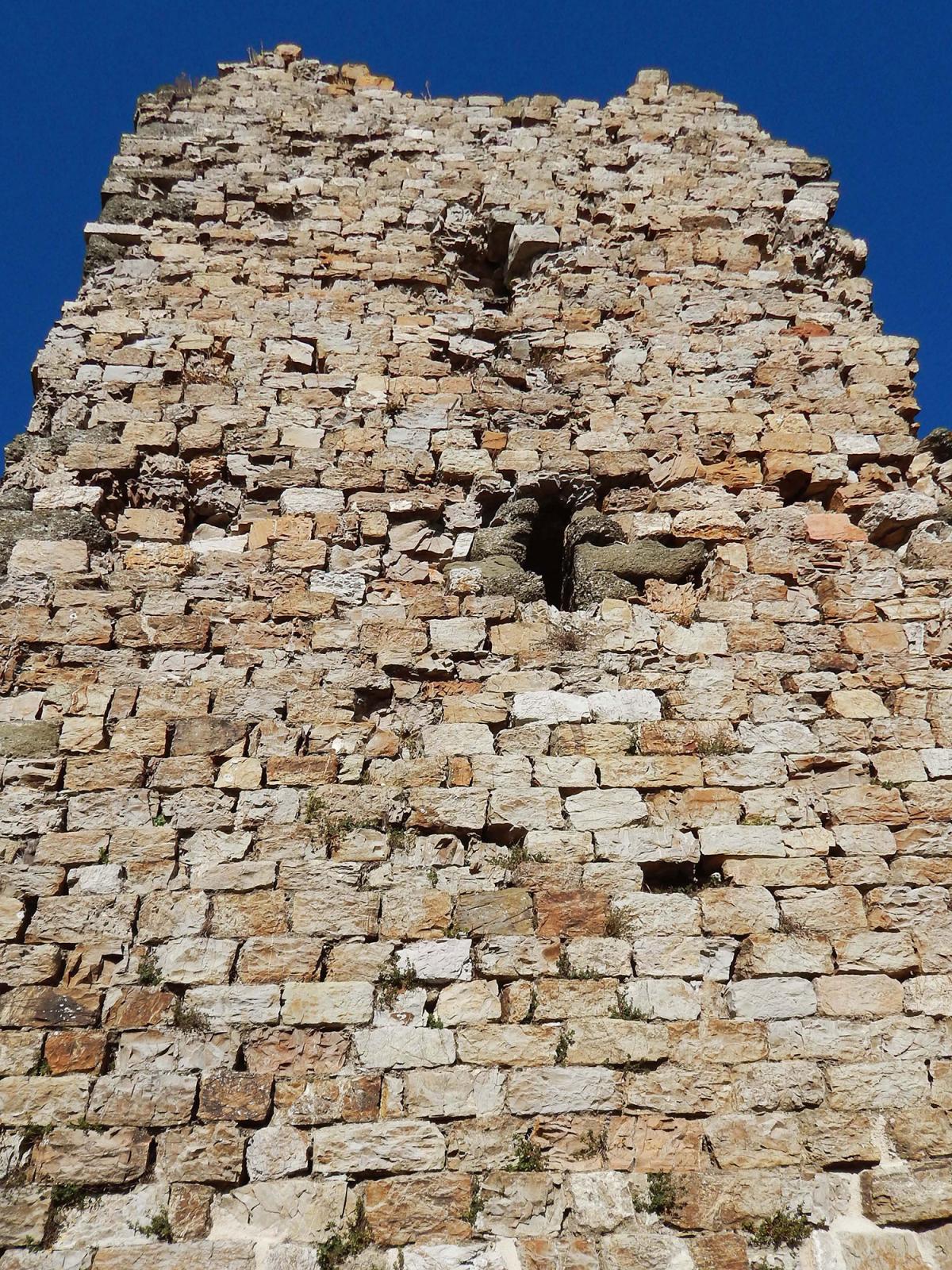
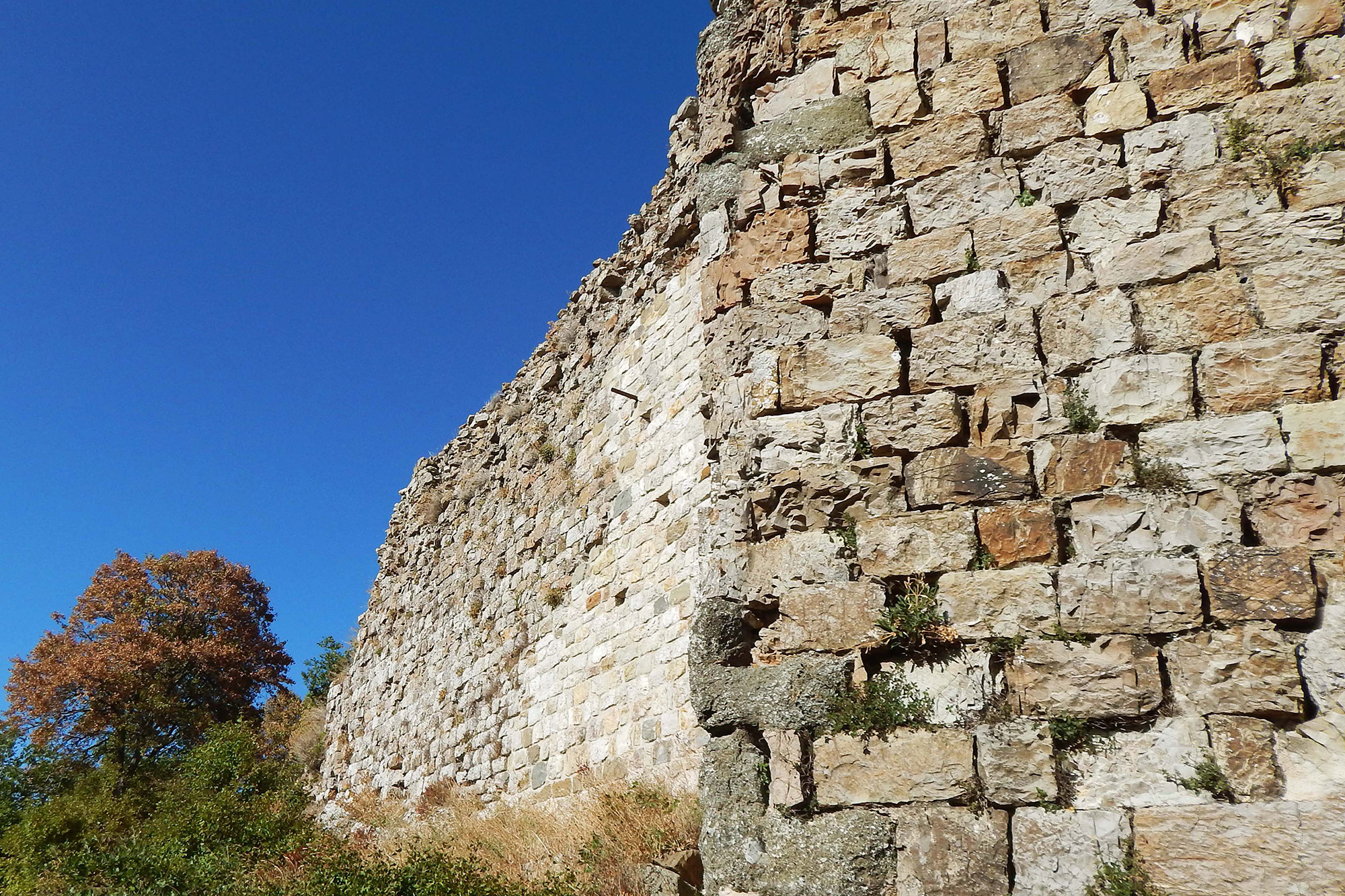
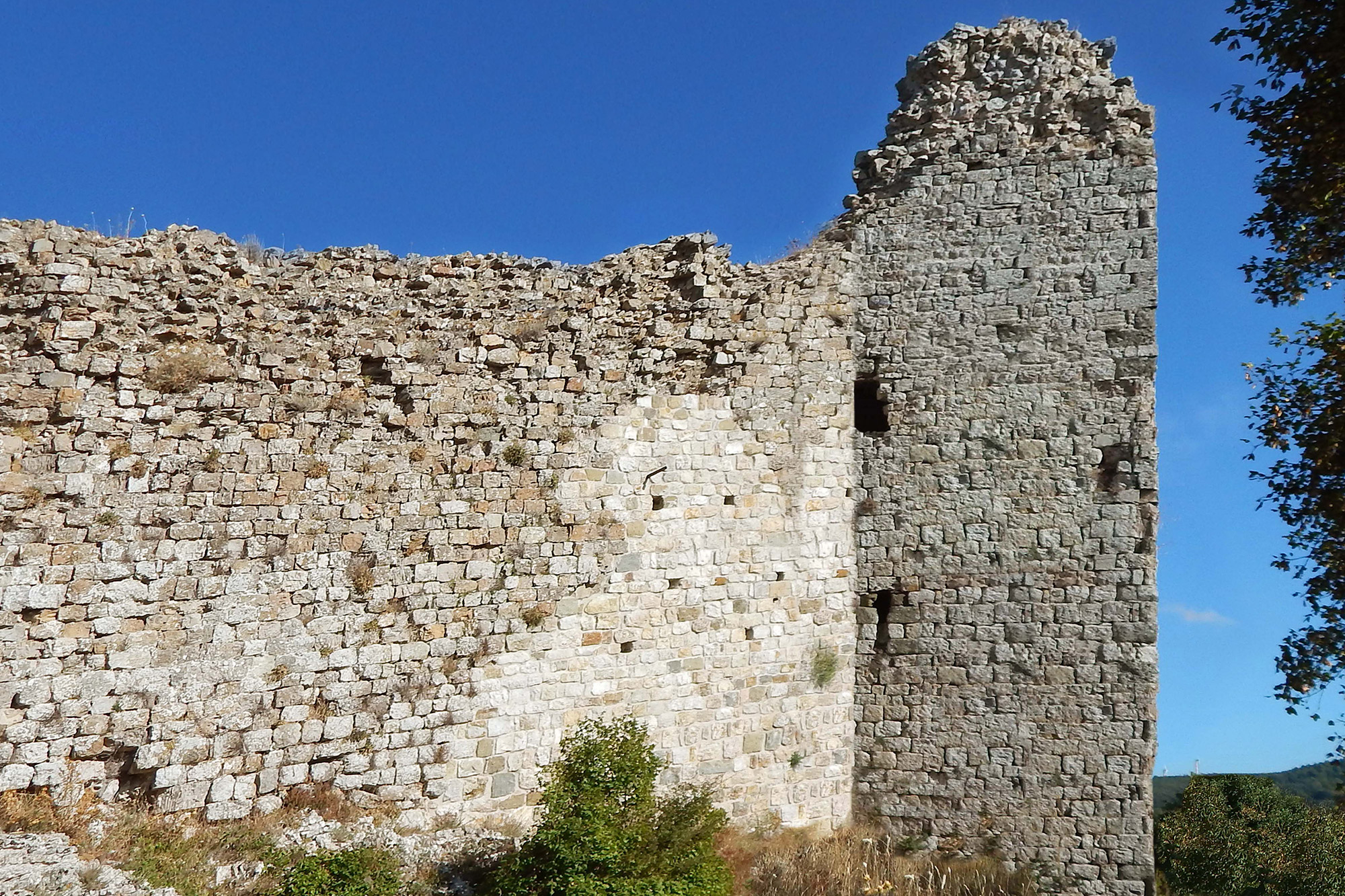
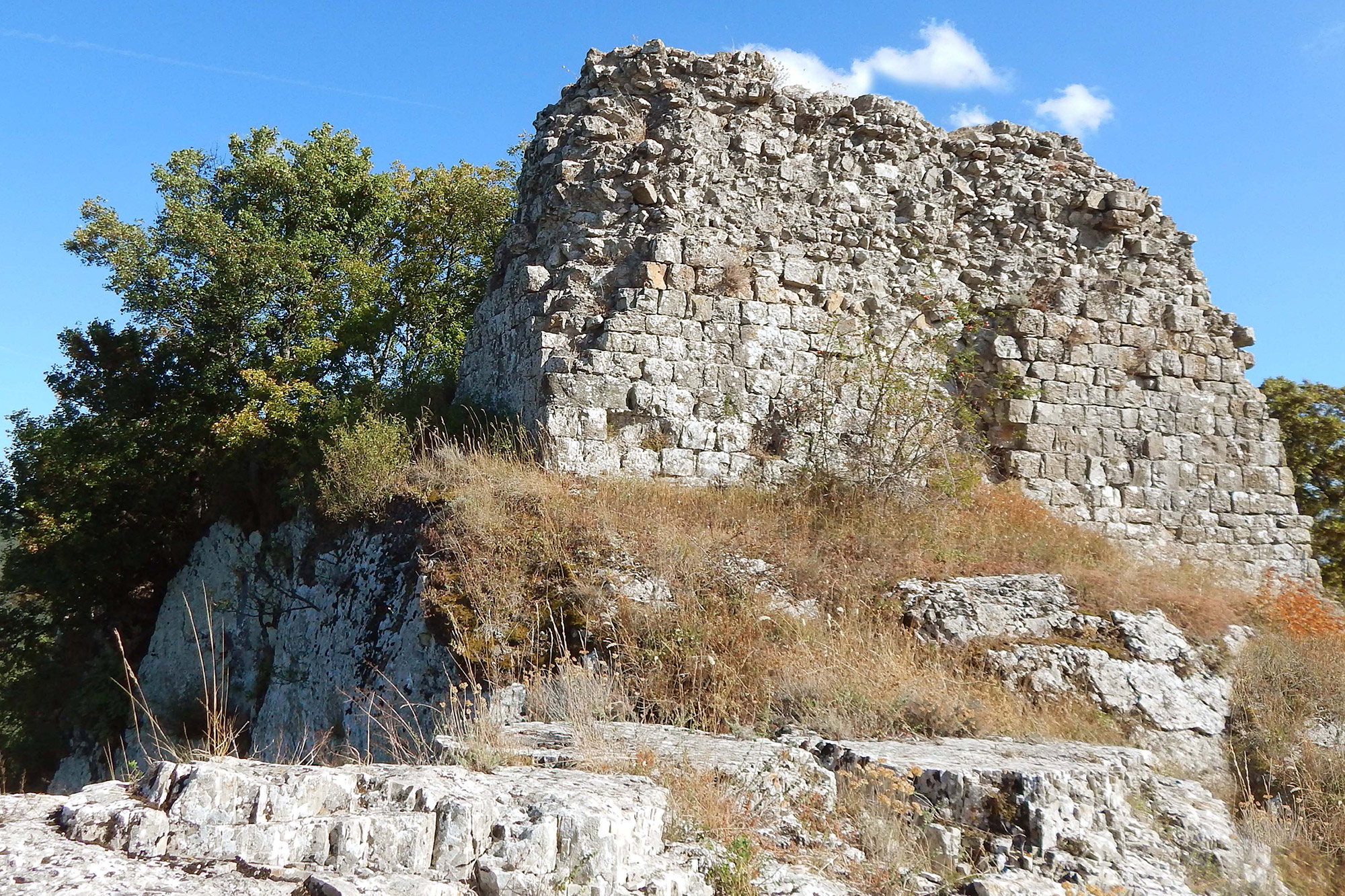
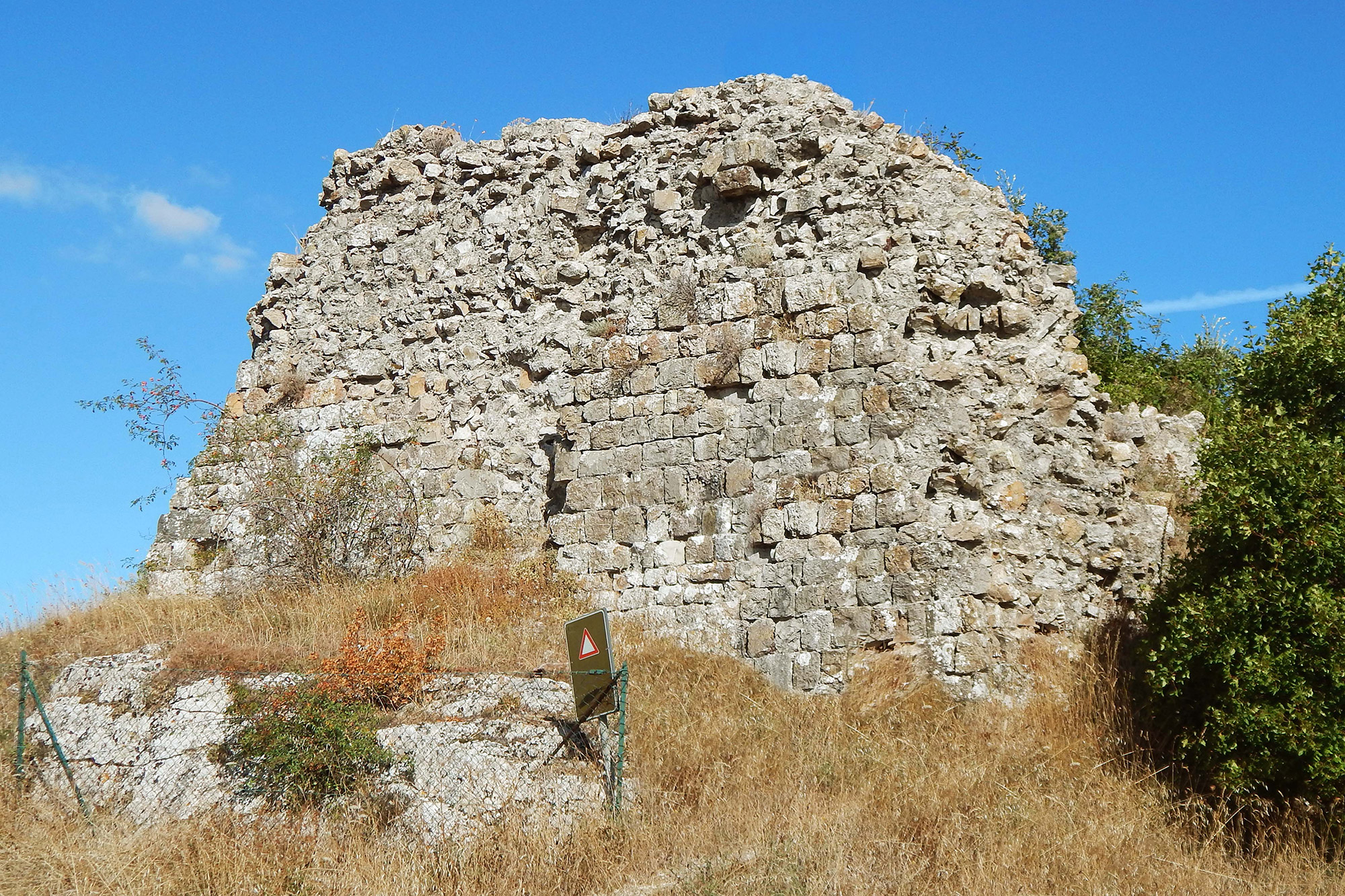
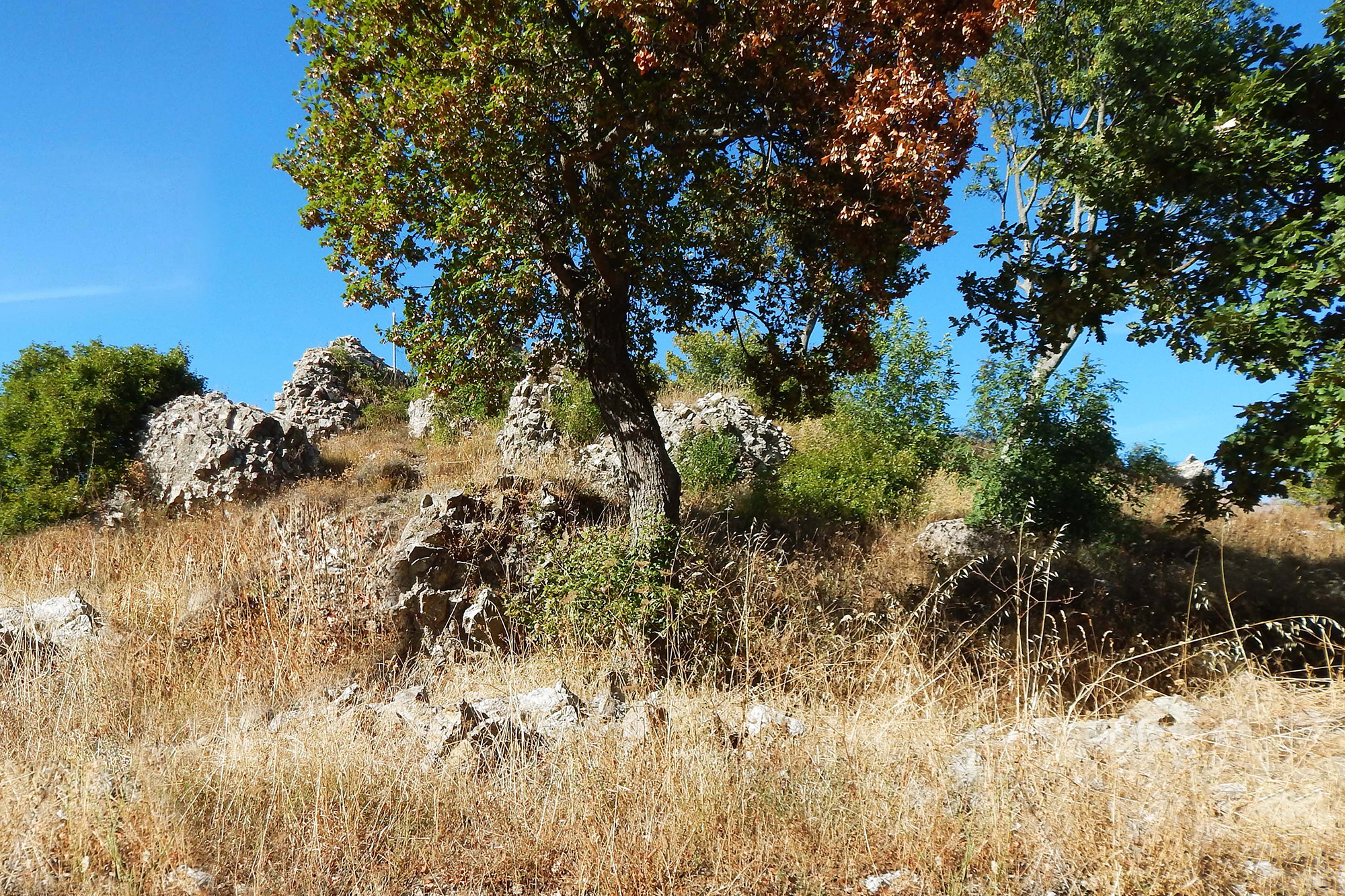

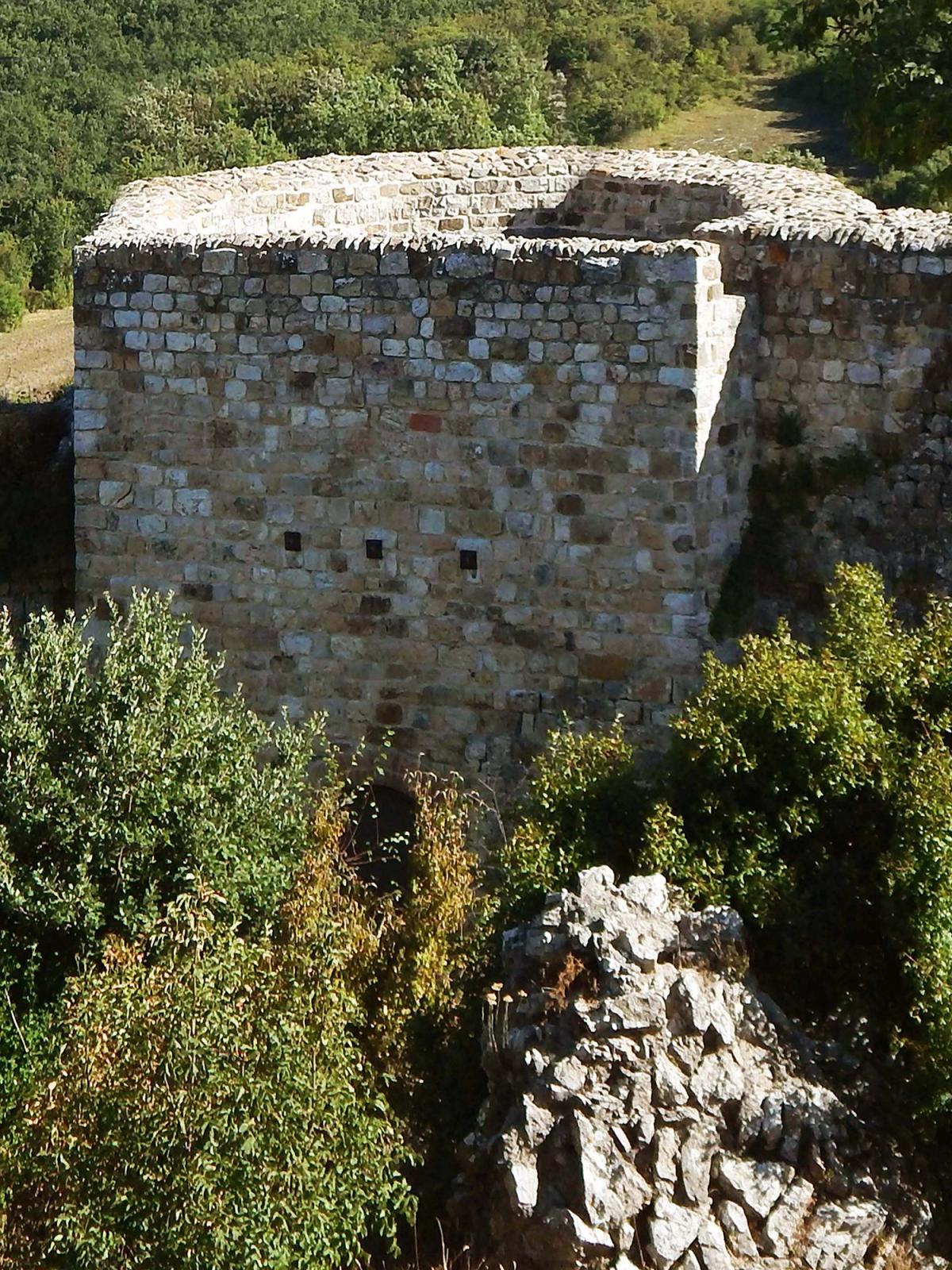

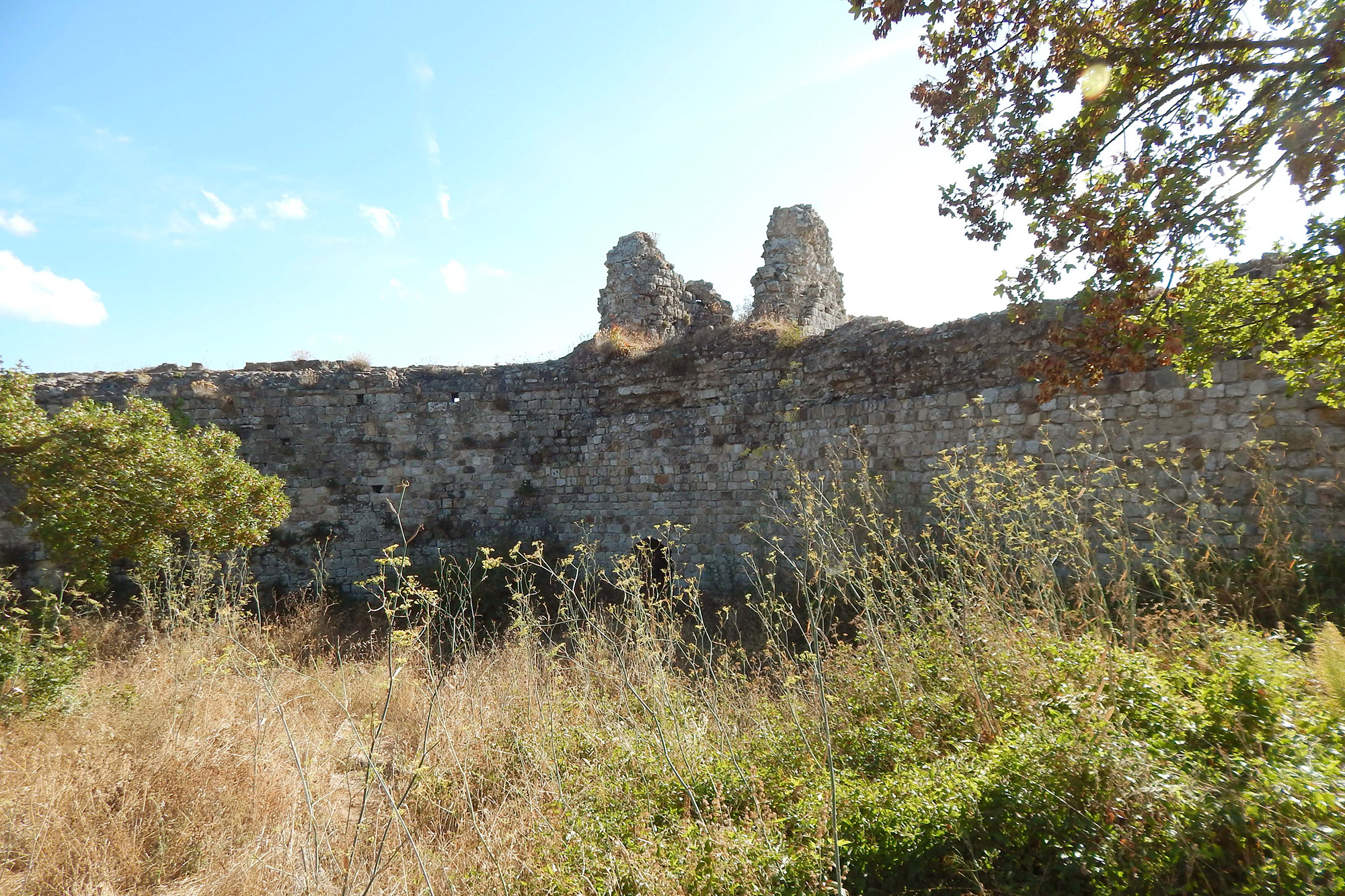
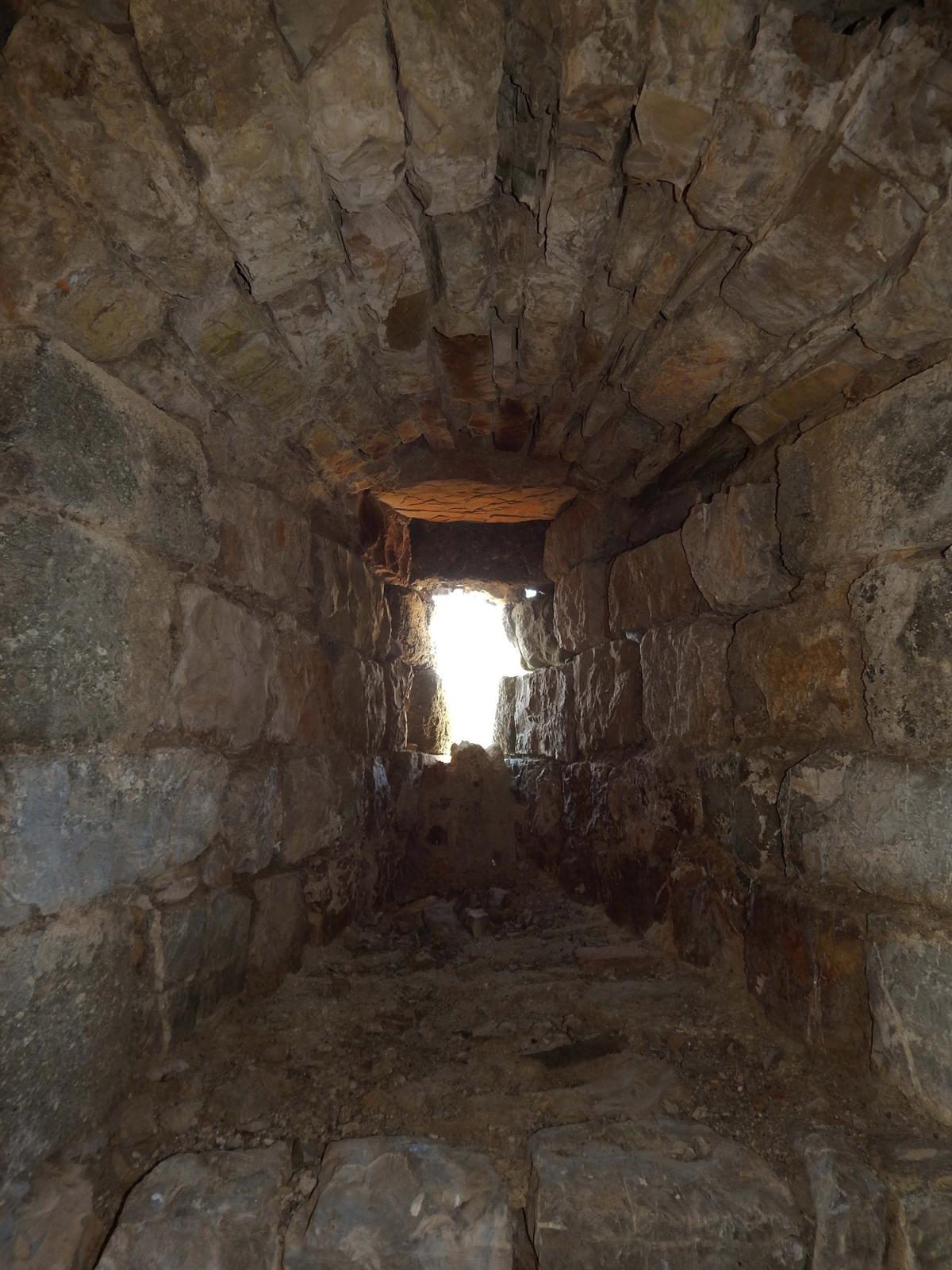
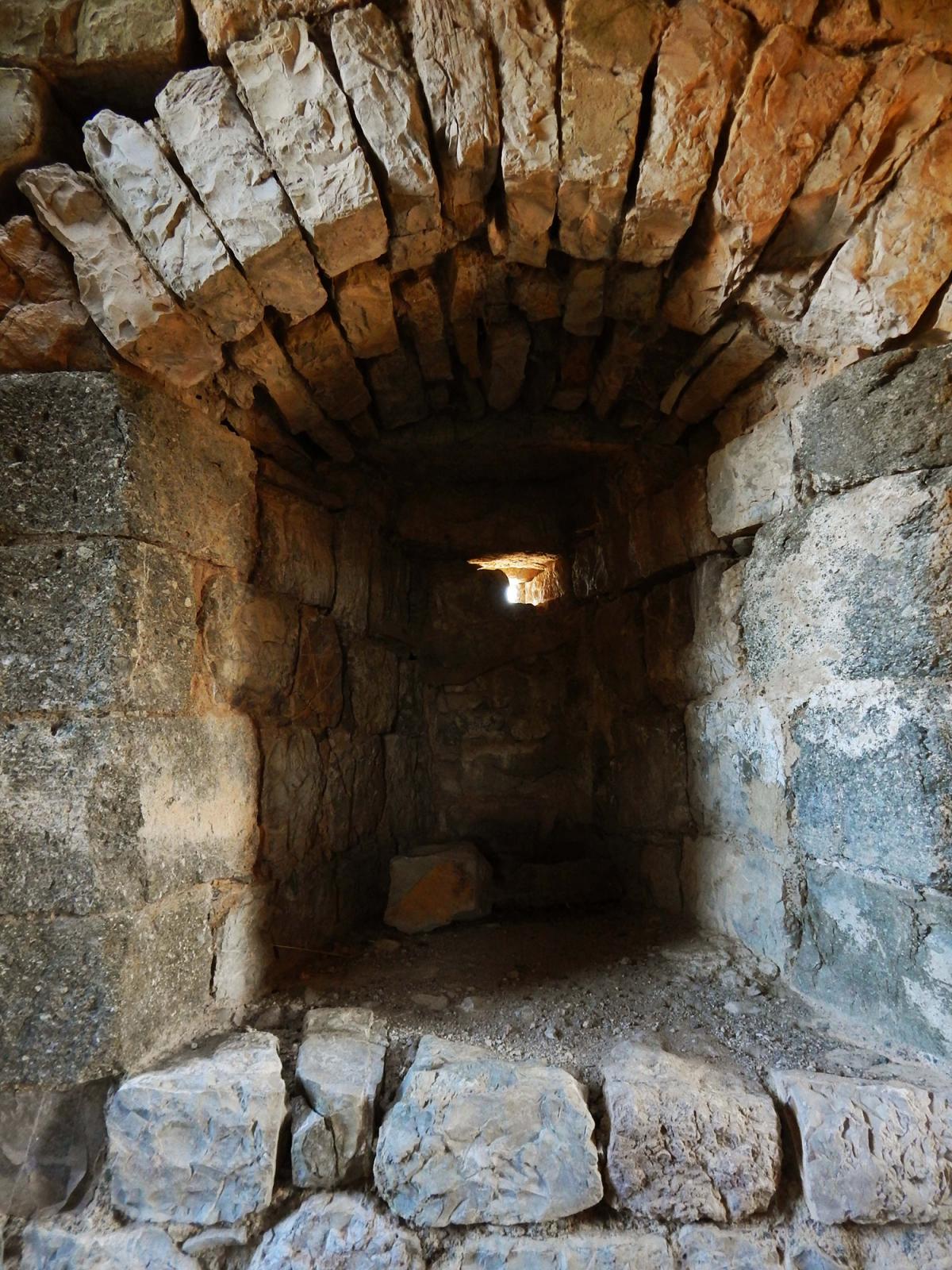
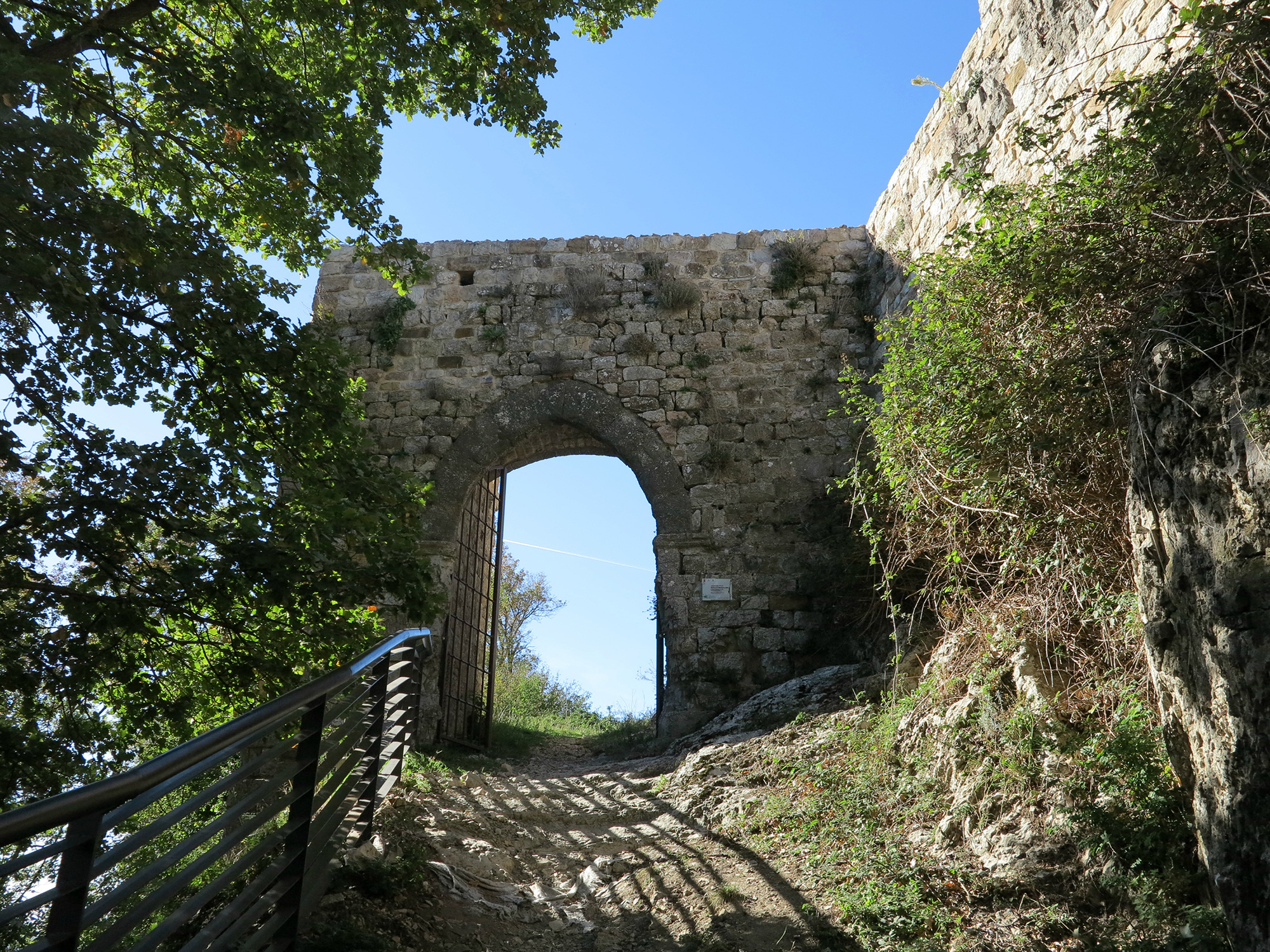
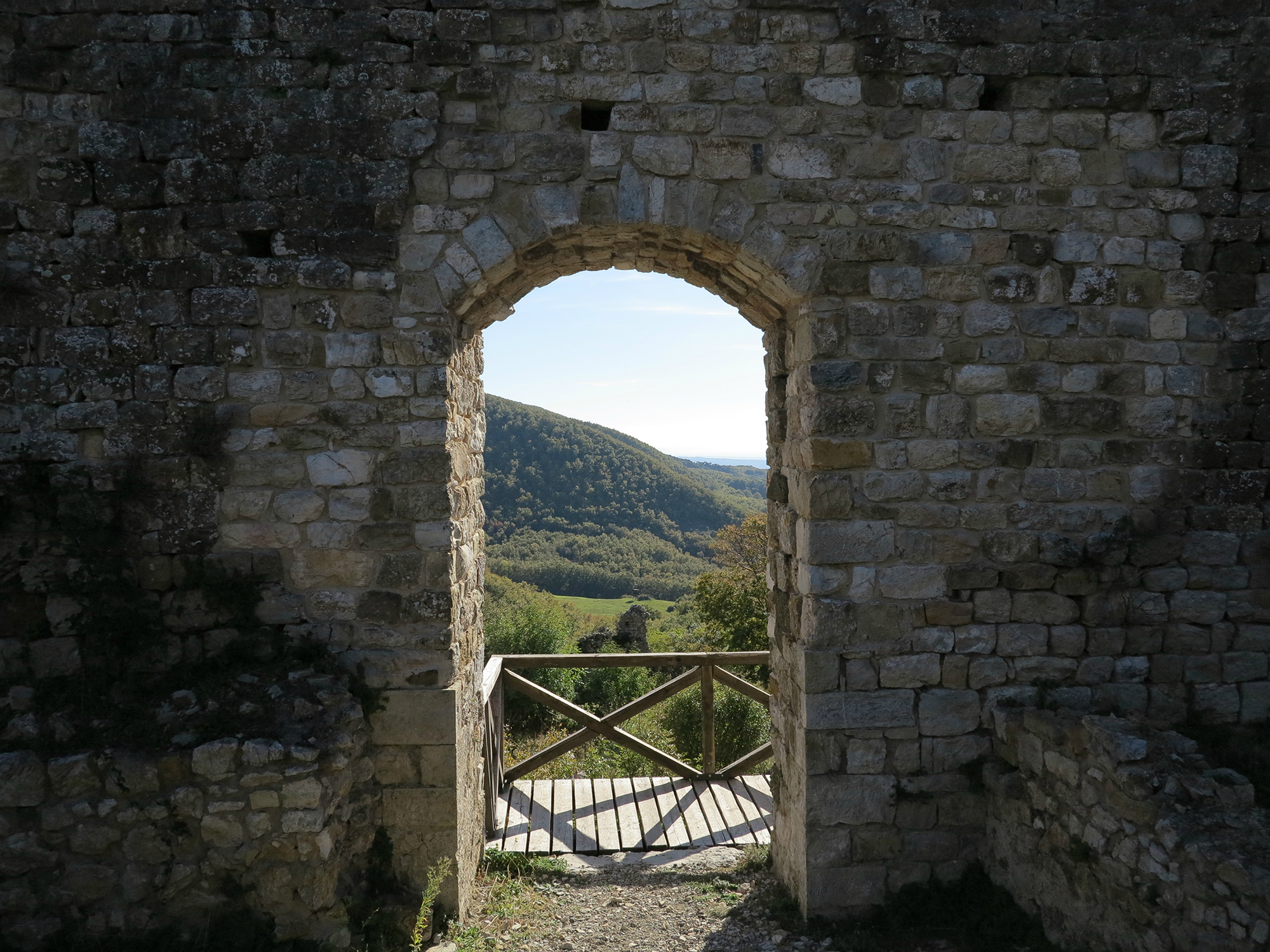





















How to reach
The dramatically located ruins of the Rocca di Pietracassia are not easily reachable. Coming from Florence you have to follow the motorway S.G.C. FI-PI-LI until the exit 'Pontedera', from here drive into the SS64 toward Peccioli, then at La Rosa di Terricciola, turn right on the SS439 to Lajatico. Arrived at La Sterza continue on the Strada Provinciale di Lajatico, pass through the village and exit its historical center following the road sign 'Tutte le Direzioni'. You will found here the first indication for the Rocca. After about 500 meters a second road sign will take you on a secondary road. You can go onward with the car for about 4 kilometres [after the first one the road is non asphalted] until the watershed called Poggio delle Cataste [450 mt.] where you must leave the vehicle. Go ahead on the wood path for about 2 kilometres and you will reach the Rocca, from the crag side, at 532 of altitude.
History
Pietracassia can be considered one of the most important High Middle Age monuments in the province of Pisa. The great calcareous rock, of 532 meters of altitude, crowned by the Rocca, dominates the ancient road that connect the Valdera with the Valdicecina, and on the north side is naturally protected by a bulge of about 80 meters. The name Pietracassia comes, perhaps, from a crack openedin the rock ('Pietra cassa' means cracked stone) but some historians connect this name with the one of the Roman triumvir Cassio. Its location was, already in the Etruscan era, ideal to control the main road used for the carriage of the copper extracted in the near Montecatini mines.
We don't have notices to set the exact year of construction of the first settlement on this site. The first written notices date back 1028 a. C.: Pietracassia is named as strategically stronghold on the border between the Diocese of Volterra and Pisane countryside. At the beginning of 12th century the Rocca was purchased by the Bishop of Volterra. After the Meloria battle (6th August 1284) the fortification became possession of Florence. Volterra regained it in 1355.
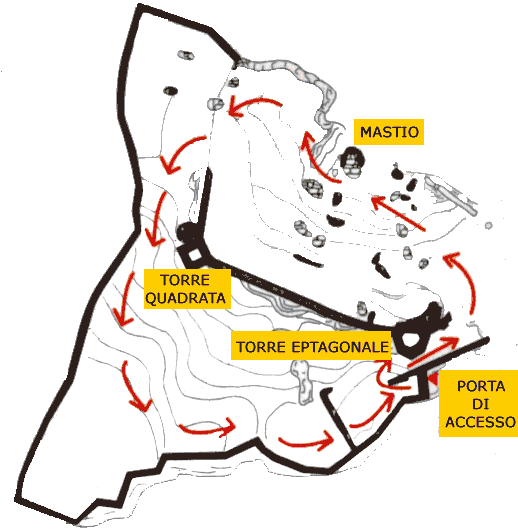
The fortified complex is composed by two different structures: the Castle, the most ancient nucleus, and the Rocca, a walled enclosure that encircle the castle, built along the ridge of the hill. Both parts are not complete in their perimeter: the north side is constituted by the ridge. Is quite impossible to fix a date for the construction of the Castle, some not confirmed theories, indicate its birth as watchtower erected here by the Longbeards. The structure is made up of by a compact and massive square enclosure without crenellation and the main front turned south. The loopholes and other openings that we can see today are of a later age. The only architectonic valuable elements are the two angle towers: one with quadrilateral shape - the western tower, today inaccessible - heptagonal shaped the other one - the eastern tower, still today in good conditions and accessible: inside a beautiful barrel vault in stone can be still admired.
The only gate to access the castle, currently seriously damaged, is opened at the center of the main curtain, elevated from the ground of about two meters. The inside buildings, lodging and the services for the troops, are no more identifiable. The rests of the keep are instead visible: the great tower rise on the vertex of the rocky hill but now is for great part collapsed. It was used also as watch tower connected at sight with the surrounding castles of Montevaso, Chianti, Terricciola, Lajatico, Orciatico, Peccioli, Miemo. From here the panorama on the countryside is grandiose.
The Rocca was built about two centuries after the castle. Approximately, considering the structure and technique constructive of the walls, it can be dated 13th century, in the period of maximum splendour of the Pisane Republic. The large stone blocks used are cut with precision, even if their positioning is less accurate and have less thickness than in the castle itself, the spaces between the blocks are filled up with mortar. It seems that this second enclosure was erected to transform Pietracassia in a walled village, surrounding the civil buildings rose around the castle, but it is more reasonable to think that the Rocca has been constructed simply to strengthen the castle on its most exposed side, taking maximum advantage of the hill morphology. The walls are constructed with a technique that allow the defensive flanking fire. In the curtain only a gate is opened, still in good conditions, just under the heptagonal tower of the castle, that acted also as ulterior defence of the main access. Before the gate are still identifiable some steps carved in the rock.
The decline of the fortress began in 1405 when the Pisane Peter Gaetani delivered it to the Florentine. In 1431, Pietracassia rebelled to the Florentine dominion, obtaining to be demolished for reprisal to its infidelity: in 1434 the Florentine Republic re conquered it and ordered the dismantling of the keep. The distance from the main inhabited center allowed the Rocca to reach until us without substantial structural modifications if not those provoked from the usury of the time.
More info & notes
Pietracassia from the drone:
Photos:
All Photo by Chiara Gracci, except:
Mongolo1984 - Opera propria, CC BY-SA 4.0, Collegamento
Mongolo1984 - Opera propria, CC BY-SA 4.0, Collegamento
Mongolo1984 - Opera propria, CC BY-SA 4.0, Collegamento
Mongolo1984 - Opera propria, CC BY-SA 4.0, Collegamento